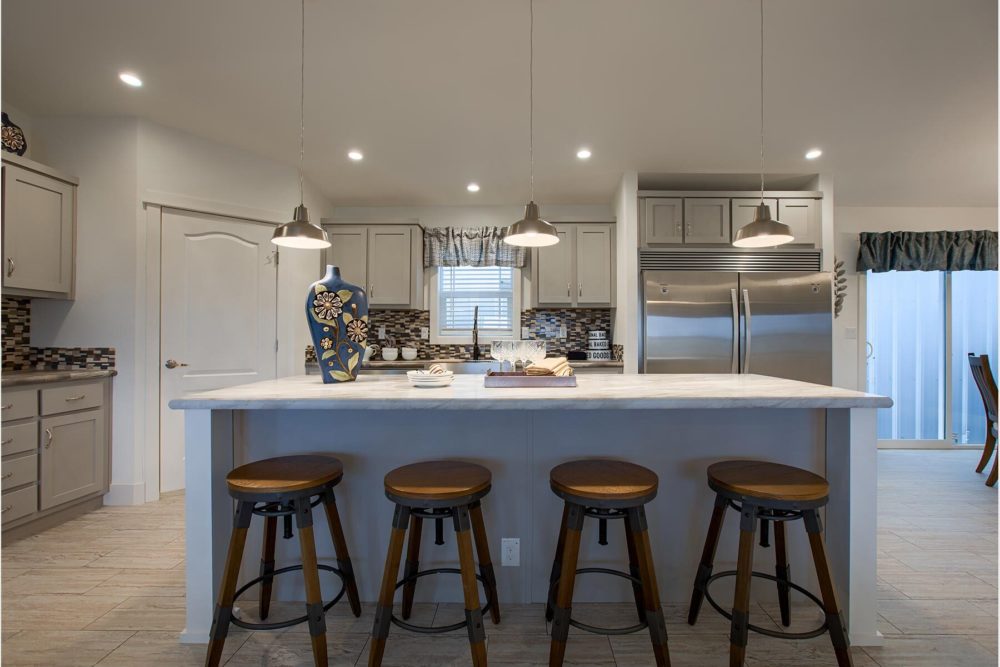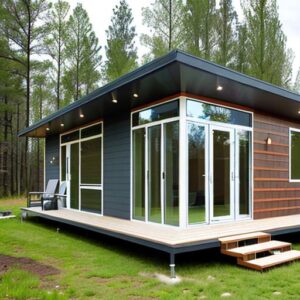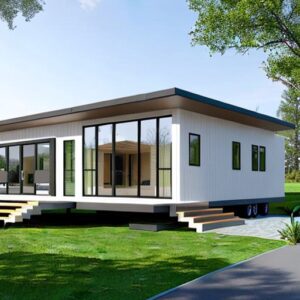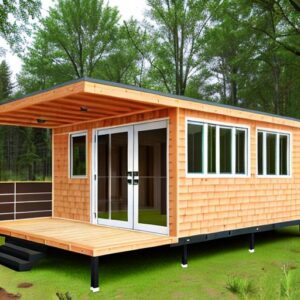Labor Costs
This is one of the least discussed cost-saving aspects of modular homes. A stick-built home contractor can make a lot of promises about costs, but whether they can deliver on it is another story entirely.

It also requires fewer hours to construct a modular home. This drives the cost down. On a stick-built site, workers have multiple responsibilities. In a factory setting, it’s more specialized. That means that each worker is fully focused on doing the job they are best at, thus improving the efficiency of every project. An expert moves more efficiently and faster. Of course, with just one job to do it takes less time to train workers which means the hourly rate is lower.
Material Costs
It doesn’t matter which materials are in use. When a stick-built home is under construction, the contractor will order the materials necessary for that build. You pay over the odds because the materials aren’t being ordered in bulk. The contractor may order some extra materials, in case of damage or weather issues. So, you’re paying even more! The majority of lumber used in stick-built homes comes in a standard pre-cut length. The contractor orders the standard length and if they need less, they simply cut it down. A waste of material you paid for!
This isn’t an issue when it comes to modular homes. The manufacturer cuts the lumber to the length they need and even if there are adjustments, the factory can use it within the home or elsewhere. That cost isn’t being passed onto you.
Bulk Purchasing
There are bulk-purchasing discounts to be had when the manufacturer works with partner companies. If you are aiming for specific brands, you may have to pay full price simply because they may not be a partner. However, if you’re prepared to work with their partners, then you will benefit from the bulk purchasing savings. With multiple homes being built at one time, a modular home manufacturer is well placed to bulk purchase. Of course, there may be areas where you want to opt for a big brand and you will be able to afford that with the savings you’ve made elsewhere.
Other Factors
Of course, these aren’t the only factors that influence the cost of a modular home.
The location does matter. You have to purchase the property as well as pay for the modular home, so that’s something to consider. You will need to consider sales tax, transportation costs, land development, permit costs, and potential excavation costs. This is something you will want to consider in terms of resale value as well. You want to purchase a parcel of land that offers you everything you need, but you have to be able to sell when the time comes, too.
Size also matters, of course. The more square footage you want from your modular home, the more you’re going to pay. The average US home is over 2,000 sq ft. Do you need as much space as that? Or, are you content with something smaller? Think long and hard about what space you require and how you can maximize it to reduce your footprint. It can save you a lot of money.
The design will also influence the price. When it comes to customized plumbing systems, utility hook-ups, or otherwise, then it will drive the cost up. As do countertops, cabinetry, and custom flooring. If you want to add loads of luxury to your modular home, then you will pay the price. There are plenty of ways to strike a balance by going big in the most important areas and scaling back elsewhere. Think about what customization you’d like and how that will influence the cost.



